New Yorker’s ‘Did David Exist?’ Exposé Falls Woefully Short
“Built on Sand: In Search of King David’s Lost Empire.” That’s the title of a new “exposé” in the New Yorker magazine. The piece, by Ruth Margalit, is an 8,400-word giant, presented as an examination into the archaeological evidence for or against the biblical account of King David and his kingdom. Spoiler alert: The article concludes that there is little evidence, if any.
The big problem with the article was not the conclusion. If that is an author’s conclusion based on a full presentation of the evidence—fine, that’s up to the author. The point of these articles is for evidence to be thoroughly presented so the readership can make up their own minds.
The glaring problem is that Margalit barely references any archaeological discoveries. Of the 8,400 words that make up the article, only about 1,200 of them actually concentrate on general archaeological evidence. And of those, only about 600 words relate to any archaeology relevant to the question of King David’s reign.
‘Only Enough Evidence to Fill a Shoebox’
The author’s view is unambiguous from the outset:
In the long war over how to reconcile the Bible with historical fact, the story of David stands at ground zero. There is no archeological record of Abraham, or Isaac, or Jacob. There is no Noah’s ark, nothing from Moses. Joshua did not bring down the walls of Jericho ….
And as for the city at the center of it all:
Jerusalem of the 10th century b.c. is an archaeological void. “I can take a shoebox and put inside everything we have from that period,” Yuval Gadot, an archaeologist from Tel Aviv University, said.
If that is indeed the case, then the article is over before it starts—no wonder only a minute fraction of it describes any sort of archaeological discoveries.
But that isn’t the case. Strangely absent from the article is any mention of Jerusalem’s “Large Tower”—a 10th-century b.c.e. structure still largely obscured below ground that, if uncovered, would constitute the tallest-known structure to have existed in all Israel to the time of Herod the Great. Or the 70-meter-long, 6-meter-high 10th century “Solomonic Wall” and related gatehouse.
The “shoebox” quote is actually probably true—but it is deceptively taken out of context. It gives the impression that in all of Jerusalem, there is only a shoebox’s worth of 10th-century b.c.e. discoveries—when in actual fact, Gadot’s Jerusalem excavation site is a Hellenistic, Roman and Byzantine one, which has thus far yielded only a small amount of Iron iia material. (It’s another story—but the historian Josephus indicates a specific reason for this.)
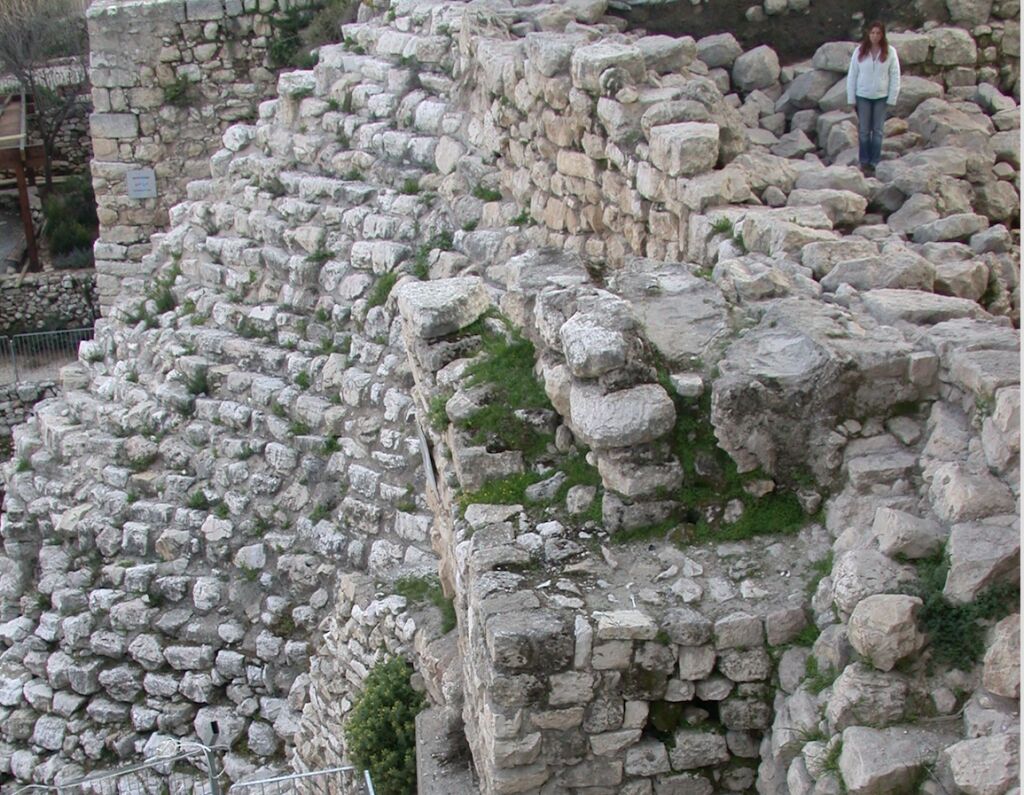
What is mentioned in the middle of the article, very briefly, is Dr. Eilat Mazar’s discovery of “King David’s Palace”—a “large public building” whose location “neatly corresponds with a verse in the book of Samuel, which describes a palace that the king of Tyre built for David.” However, the article describes that it was “nearly impossible to date conclusively” and highlights how the announcement of her discovery “drew immediate rebukes.”
What wasn’t mentioned was the sheer size of the “large public building,” with foundation walls up to six meters thick, the royal Phoenician-style architecture, an explanation of the several scriptures that pinpoint the location of David’s palace, and the fact that dating wasn’t “nearly impossible,” but was reached through carbon dating as well as pottery reading. A “stepped-stone wall” was mentioned (it’s a buttress), but the 10th-century b.c.e. dating was skipped over, as well as the fact that it is the tallest exposed Iron Age structure in all Israel.
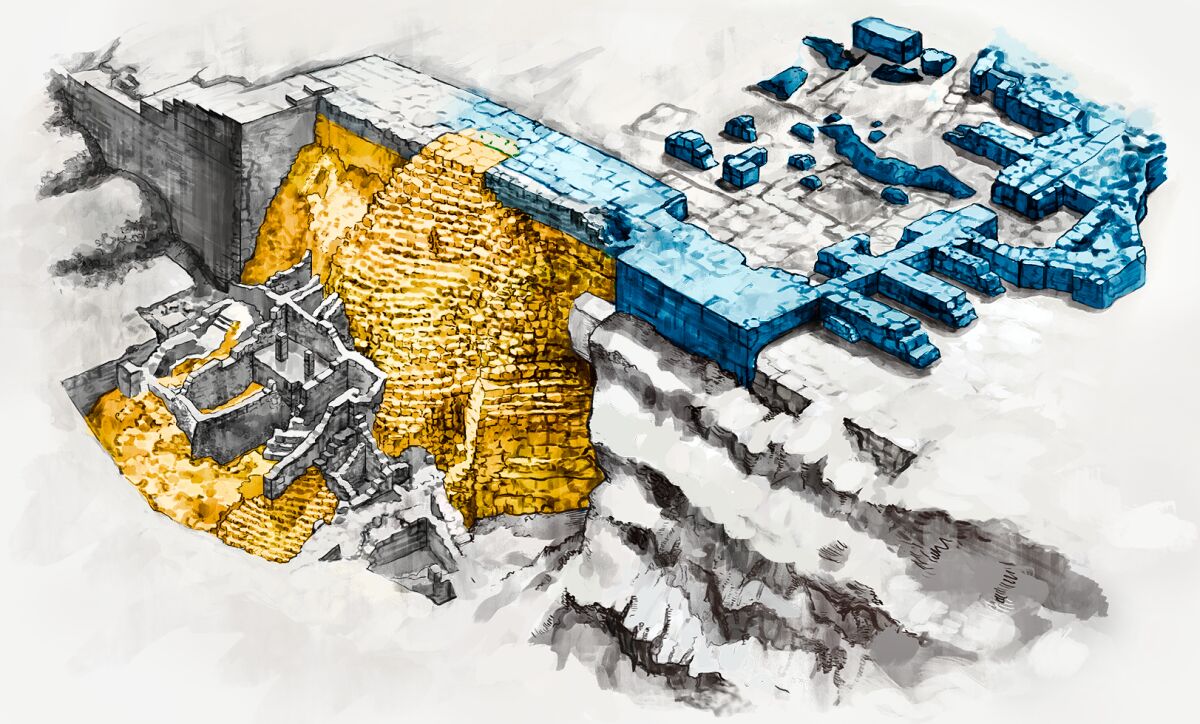
If all this evidence was omitted, and only 1/14th of the article actually examined any archaeological discoveries surrounding the Davidic period, what was the rest of it about?
Put simply: The New Yorker article is not about archaeology. In fact, it’s hardly even about King David. Rather, the piece is a detailed biographical sketch of the famously “anti-David” theorist: Prof. Israel Finkelstein.
An ‘Eminent Biblical Archaeologist’
A case in point: King David’s name is mentioned 55 times throughout the article. Israel Finkelstein’s? A total of 80. Dr. Mazar, Jerusalem’s “chief” archaeologist who has led excavations in the city over a span of 30 years, is mentioned 8 times and quoted only once. Finkelstein, who has never excavated in the city, is quoted nearly 40 times. (Perhaps unsurprisingly, the “defendant” in the middle of it all—the Bible—is not quoted at all.)
It’s unfortunate that in setting up a lengthy, broad-scope exposé on the historicity of King David, the author instead chose to feature the life, times and musings of the “generous, witty, courtly, overwhelmingly charming” Israel Finkelstein—a Tel Aviv University scholar and archaeologist who has built a career on challenging the perception of King David as anything more than a tribal “hillbilly.”
A broad picture of Finkelstein’s life is painted: The emigration of his father, a “talented athlete” from Ukraine, and his orchard career; Finkelstein’s skills as a “math prodigy” at age 4; his father’s desire for him to be a nuclear physicist; his “playboy” days; what happened to his first marriage, how he met and married his second wife; why he no longer plays tennis, and has traded it for a Pilates regime. There’s the full gamut: Finkelstein’s “slim” physique, the furniture in his office, the “cashmere” sweater, what he nicknames his electric bike (no joke). Careful details include the Tel Aviv University janitor’s comparison of Finkelstein to “Sean Connery,” Finkelstein’s own comparison of himself to the “great Jew” Baruch Spinoza, and how he “often refers to himself as ‘your slave,’ ‘your loyal slave,’ “or ‘your wretched slave.’” Professors at different colleges are cited, from France to the United States, heaping praise upon Finkelstein. You’d be forgiven for thinking he was the Messiah (indeed, he is quoted referring to himself ironically as the “greatest savior of Jerusalem” for his personal theory on where the first city was concentrated). The author names him as an “eminent biblical archaeologist” with “vision,” who has “pushed Israeli research to the forefront of science.”
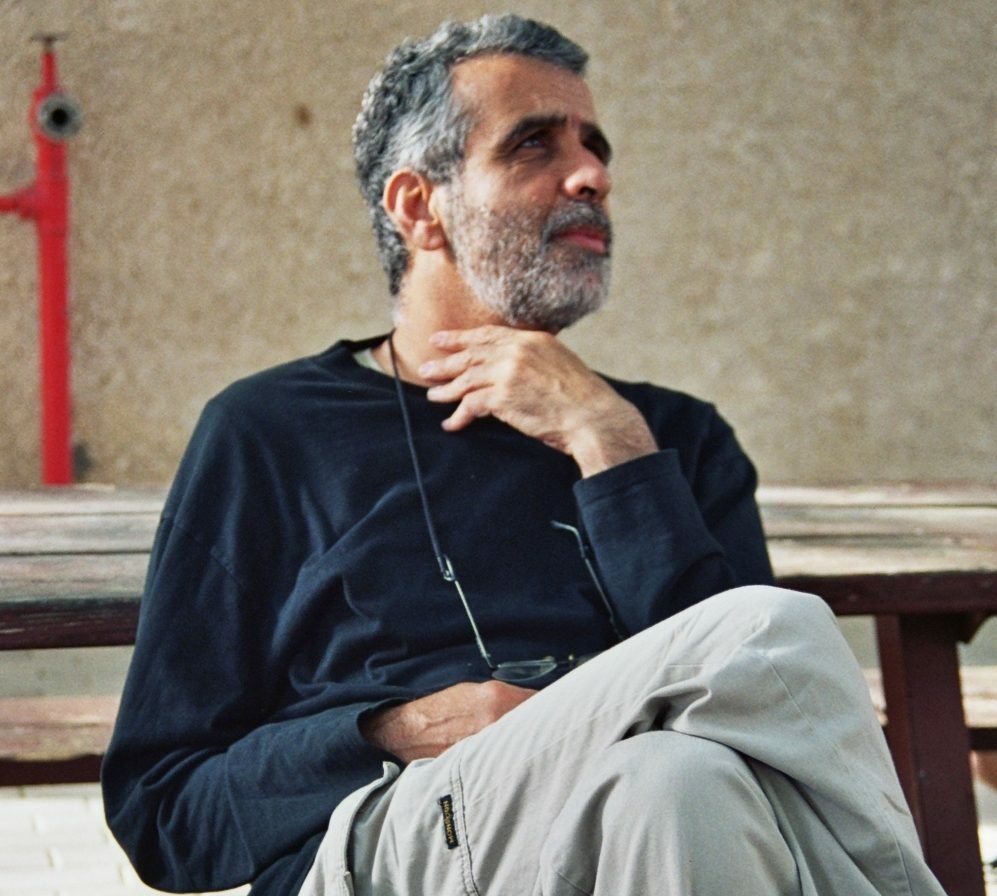
And as an aside—if King David ever existed, he was only ever a small-time nomadic “hillbilly.” Why?
The article presents a brief account of Finkelstein’s excavations of Megiddo, his comparison of discoveries to those at a handful of other sites, and his subsequent publication of a theory in 1996: that the plethora of grand 10th-century b.c.e. “Davidic/Solomonic” period finds should be shunted forward 100-150 years, to the time of King Omri—that the 10th century was merely a kingdom-less nomadic “void.” Margalit details what happened after Finkelstein’s new theory was published:
Finkelstein thought that he had settled the issue; the scholarly world would accept his theory, which came to be known as the “low chronology,” and move on. “I was naive,” he told me. “I didn’t know what kind of battle I was getting myself into.”
(It might come as a surprise, but that’s not how the scientific world works: “Issues” such as the existence of an early Israelite kingdom are not simply “settled” by a radical new theory, “accepted by scholars,” and moved along.) The article then paints the difficulties faced by a beleaguered Finkelstein in getting acceptance for his radical new views on King David and Solomon, among a supposedly Bible-thumping realm of archaeologists.
As a biography, the New Yorker article is cleverly written, even humorous. The trouble is that it is presented under the pretense of examining archaeological evidence for the historicity of King David, which it does not.
Professor Garfinkel to the Rescue?
Mercifully, halfway through the article, Prof. Yossi Garfinkel is introduced. His excavations at the significant circa 1000 b.c.e. sites of Khirbet Qeiyafa and Khirbet a-Ra’i have done much to highlight the existence of a Davidic kingdom in Israel.
Unfortunately though, instead of archaeological discoveries, the New Yorker author was again more interested in minutiae about the “bald, round and jocular, with a dimpled chin” Garfinkel (in contrast to the “6 feet 2, bearded, with a deep baritone and elegant hands that always seem to be conducting an invisible orchestra” Israel Finkelstein). Only about 300 words of the article detailed discoveries from both Garfinkel’s important excavation sites. Instead, time was taken to level thinly veiled criticism at his excavation site:
Like most archaeological digs, the site had been divided into a symmetrical grid, but digging across the grid wasn’t uniform. Some squares were knee-deep, while others dropped 10 feet underground. Not only did the result look uneven—a topographical Tetris—but it meant that excavators were literally standing in different time periods.
Or his “fresh-faced” Australian student labor:
One student, on her first dig, let out a shriek. She had discovered four olive pits that now could be used for radiocarbon dating. … Another volunteer, wearing a billowy dress over sweatpants, trundled by with a loaded wheelbarrow that nearly tipped over.
Or his “easily distractible curiosity”:
Then he alighted on something else …. Garfinkel has a boundless, easily distractible curiosity …. In the middle of showing me chambers that his team had unearthed, he veered off into a discourse on the holistic qualities of the mandrake.
Or Finkelstein’s opinion of him:
When I sit in a conference abroad, and he goes onstage and says primitive things, I want to die from embarrassment.
Or accusations that his archaeological conclusions are only drawn to make donors happy:
Garfinkel’s research has been supported by a French Algerian-born Israeli named Madeleine Mumcuoglu, who made a fortune from a homeopathic cold remedy. … [She states:] “What fascinates me is if I can scientifically prove that one item or one word in the Bible is accurate.”
Margalit continues, quoting Prof. William Schniedewind of ucla: “Garfinkel’s excavations ‘have been seminal, but his interpretations sometimes are a little bit … Well, I mean, you need money, right?’” (All accusations I guarantee that Garfinkel—and many of his peers—would strongly counter. He’s a fantastic archaeologist and expert in his field.)

The article continues with the above-described Dr. Mazar interlude, alleged “politics” influencing Jerusalem excavations, and highlights spats between various archaeologists (Finkelstein called William Dever a “jealous academic parasite”; Dever accused Finkelstein of pushing “post-Zionism”).
Several paragraphs on from the brief, dismissive footnote on Dr. Mazar’s excavation of “David’s Palace,” Margalit described Finkelstein touring her through Gadot’s late-period excavation site (just northwest of Mazar’s site). She described (emphasis added):
What [Finkelstein] doesn’t see [at Gadot’s site] is evidence of a palace, or a temple, or a fortified wall, or an inscription, or substantial pottery—anything whatsoever from the early Iron Age period of the United Monarchy. … There is another explanation for the failure to locate the ruins of David’s palace: He never had one.
Wait, what?
Some more on politics, something about David Be’eri’s Elad Foundation buying up Palestinian homes, and finally the article concludes by taking the reader on a journey into the Negev desert, presenting research that may point to the existence of David’s enterprise as “something bigger than a few tribes.” But don’t get too excited—“holding our breath for signs of his lavish kingdom” would be “a mistake,” she wrote.
The Archaeological Community Responds
Breaking Israel News reached out to Dr. Mazar for comment on the New Yorker article after it was published. She had already read it (as had others they contacted: Barnea Selavan called it a “smear all the way”; Tricia Miller, “inaccurate and biased.” The academic community is acutely aware of such articles regarding their profession). Mazar provided a lengthy response, which followed in part:
The article was about Prof. Finkelstein, and had nothing to do with King David. The article did not deal with archaeological evidence or proof. The article therefore cannot claim to represent such an important subject without bringing any of the proofs.
The article was very well written, which makes it even more of a pity that it was not serious about the subject. It is a shame to misguide the public and misrepresent this subject. … It is misleading to the public to present the theories of a specific archaeologist as fact when these theories have not been proven by facts and evidence.
As a researcher, I am deeply concerned about how this type of process affects the process of proofs and evidence. The proofs are stronger than anything else, but what is happening is a focus on errors. This confuses and misleads the public.
It’s a shame Dr. Mazar’s opinion wasn’t even featured in the article. There was every opportunity—after all, she had been reportedly interviewed by the author for over an hour. And the only quote from her, within the entire article, was six words from a 2005 press release—“I Have Found King David’s Palace.”
View: Déjà Vu
All in all, it was a disappointing demonstration of bias in a major media piece. But such slanted “scoops” are common. Five major recent examples come to mind:
- New Yorker (2020): “In Search of King David’s Lost Empire”
- Der Spiegel (2019): “Kings, Prophets, Legends: The Historical Truth About the Heroes of the Bible”
- National Geographic (2019): “Under Jerusalem: New Excavations Reveal the Ancient City—and Stoke Modern Tensions”
- New York Times (2019): “Can an Archaeological Dig Change the Future of Jerusalem?”
- Haaretz (2017): “Is the Bible a True Story?”
What’s most striking about these articles is how precisely identical they are. Some headline different angles: the archaeology of Jerusalem; the historicity of the Bible; the historicity of David. But all generally toe the line of the following, prescribed layout:
- Lead with feature archaeologist
- Describe early attempts to “prove the Bible”
- Detail a “lack of evidence” for the Bible
- Claim biased political motivations
- Mention Dr. Eilat Mazar’s excavations (preferably briefly and dismissively)
- Laud Israel Finkelstein
- Mention Yossi Garfinkel’s Khirbet Qeiyafa dig
- Decry a funding bias for Jewish excavations
- Feature the desperate plight of Palestinians in Jerusalem (preferably children)
- Criticize David Be’eri (of Jerusalem’s Elad Foundation)
- Name check either Yonatan Mizrachi or Yuval Gadot on Jerusalem (or both)
- Conclude with a discourse on an excavation at a desert outpost
OK, only three out of the five articles wrap up with a discourse on a distant desert archaeological site (a choice of either Timna or Qumran). But you get the point. The articles generally contain the same information, same personalities, same themed quotations, and in the same order (although daringly, the Haaretz piece introduces the mandatory “political bias” point at the end, rather than at the start).
And these are only the more recent articles. I ran across a CBS 60 Minutes televised segment from 2010 titled “Controversy in Jerusalem: The City of David.” I looked up the transcript, and sure enough, virtually the same information in the same order (albeit much shorter and not focused on a range of archaeologists): 1) Featured archaeologist; 2) Misguided attempts to prove the Bible; 3) “Lack of evidence” for the Bible; 4) “Biased” political motivations; 5) Funding bias; 6) David Be’eri’s Elad Foundation; 7) Desperate plight of the Palestinians.
It’s pretty obvious: If you want a generous account of “iconoclast” scholars (Margalit’s word for Finkelstein), a brow-beating narrative of the militant, ‘rich Jewish settler’ versus ‘impoverished Palestinian children,’ and an on-the-side, foregone conclusion of ‘no real evidence for King David,’ then look to Haaretz, National Geographic, New York Times, New Yorker, Der Spiegel, 60 Minutes. (They are always quick to accuse the Jewish City of David officials of “threats, forged documents and fraudulent statements”—to quote Margalit—but I don’t recall any of them mentioning the Palestinian fatwa of death to Muslims selling land to a Jew.)
But if you want a full, honest examination of archaeology—a review of specific discoveries relating to David and his kingdom (or other Israel-related discoveries)—then forgive my bias, but look no further.
Our website features what the “stones speak” (to quote Dr. Mazar) about a multitude of different archaeological discoveries across the Middle East. We may draw conclusions at the end of certain articles, based on our assessment of the finds. But whatever the conclusion, the point is that actual evidence is presented—and the reader can make up his or her own mind.
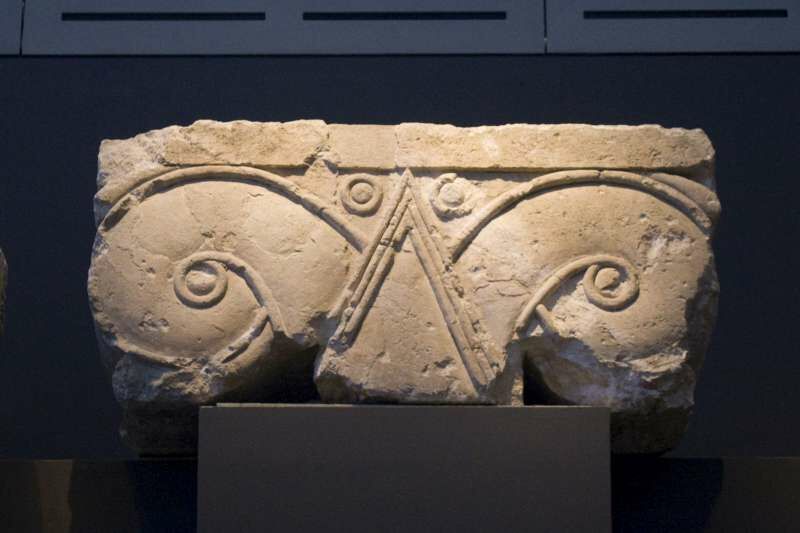
Want to know why Dr. Mazar identified the “Large Stone Structure” as David’s palace? (There were numerous archaeological reasons for this conclusion—one that was in the works for a decade—though you wouldn’t know it from the New Yorker article, which presented it as more of a knee-jerk association based on little-to-no evidence.) Take a look at our article here. Want to know why Professor Garfinkel believes Khirbet a-Ra’i to be David’s biblical city Ziklag? The New Yorker piece doesn’t give any archaeological reasons. See our article here. Want a full account of what was discovered at Khirbet Qeiyafa and why it is identified as a Judahite site? See here. (The New Yorker article did provide some evidence for the debate as to whether or not it was a Judahite, Philistine or Canaanite site—but it failed to mention one of the significant pieces of evidence: the famous inscription from the site, identified as early Hebrew.)
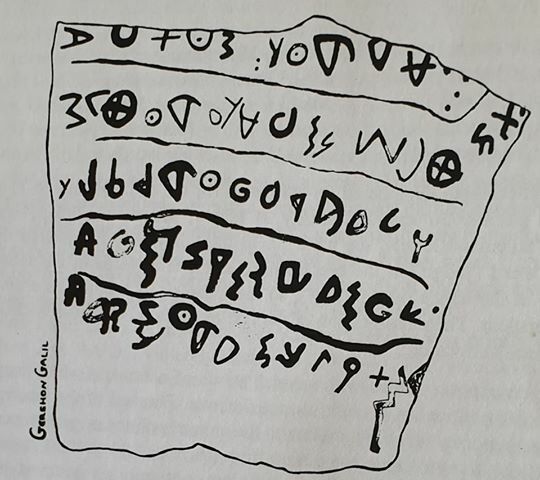
And more, only partially alluded to in the New Yorker: The evidence that the Timna mines were operated by, and transported material to, Jerusalem during the 10th century b.c.e. Why Finkelstein’s six-chambered gate theory is challenged—why they are widely considered to be Solomonic, not Omride. We also have our own take on the question “Did David and Solomon Actually Exist?”
Despite Margalit’s sweeping dismissal, there is a plethora of evidence for the world of Abraham, Isaac and Jacob—right down to prices and common sayings—even including inscriptional evidence for the names of the patriarchs Abraham and Jacob. And there is evidence for the “tumbling down” of Jericho’s walls during the days of Joshua—the jury’s not out on that. And David is far from the “only one [in the Old Testament] that we can prove existed”—at least 53 different Old Testament individuals have been corroborated by archaeology.
Perhaps some may find it unnecessary to critique the New Yorker publication: Let it go; live and let live. But the scientific world is built on debate based on evidence. And I take exception to journalism that, in a brief stroke of the keyboard, undermines before a large audience the decades of remarkable and grueling labor undertaken by genuine, dedicated and skilled archaeologists. Not to mention the attempt to undermine the faith of millions of others with a biased presentation of guns-blazing theories and little-to-no evidence.
Sure, draw conclusions—but present evidence!
That’s what the Bible itself literally taunts the skeptic: “Present your argument, says the Lord. Produce your evidence, says Jacob’s king. Let them produce evidence!” (Isaiah 41:21-22; New English Translation):
It’s kind of ironic: The Bible presents David’s life as a constant fight against those who would try to undermine him. In quoting Finkelstein some 37 times, the New Yorker article never once thought to quote the Bible, nor the individual in question. The following is taken from Psalm 102 (a psalm that isn’t specifically attributed to King David, but the psalms on either side of it are, and Jewish tradition holds that it was written by the king):
Mine enemies taunt me all the day; They that are mad against me do curse by me. … My days are like a lengthening shadow; And I am withered like grass.
But Thou, O Lord, sittest enthroned for ever; And Thy name is unto all generations.
Thou wilt arise, and have compassion upon Zion; For it is time to be gracious unto her, for the appointed time is come.
For Thy servants take pleasure in her stones, And love her dust.